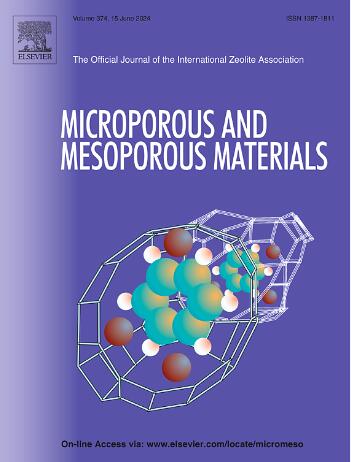Degradation of quinoline by ozone oxidation using Fe3Ce2/NaY catalyst
IF 4.8
3区 材料科学
Q1 CHEMISTRY, APPLIED
引用次数: 0
Abstract
Herein, Fe3Ce2/NaY catalysts for catalyzing the oxidative degradation of quinoline by ozonation were prepared by the impregnation method and characterized by X-ray diffraction (XRD), X-ray photoelectron spectroscopy (XPS), transmission electron microscopy (TEM) and energy dispersive spectroscopy (EDS). The Fe3Ce2/NaY had high activity for catalyzing ozone oxidation, the quinoline removal efficiency reached 99.14 % in 10 min for the 90 mg/L quinoline solution. Meanwhile, the catalyst had good reusability and the COD removal performance was almost unchanged during four cycles of reaction. In the catalytic ozone oxidation system, the reaction kinetics of quinoline degradation were consistent with a pseudo-first-order reaction. Surface hydroxyl groups facilitated the adsorption and decomposition of O3, thus promoting the generation of reactive oxygen species (ROS) and improving the quinoline mineralization efficiency, which played an important role in the catalytic process. The degradation intermediates were also investigated using liquid chromatography-mass spectrometry (LC-MS) and ion chromatography.

求助全文
约1分钟内获得全文
求助全文
来源期刊

Microporous and Mesoporous Materials
化学-材料科学:综合
CiteScore
10.70
自引率
5.80%
发文量
649
审稿时长
26 days
期刊介绍:
Microporous and Mesoporous Materials covers novel and significant aspects of porous solids classified as either microporous (pore size up to 2 nm) or mesoporous (pore size 2 to 50 nm). The porosity should have a specific impact on the material properties or application. Typical examples are zeolites and zeolite-like materials, pillared materials, clathrasils and clathrates, carbon molecular sieves, ordered mesoporous materials, organic/inorganic porous hybrid materials, or porous metal oxides. Both natural and synthetic porous materials are within the scope of the journal.
Topics which are particularly of interest include:
All aspects of natural microporous and mesoporous solids
The synthesis of crystalline or amorphous porous materials
The physico-chemical characterization of microporous and mesoporous solids, especially spectroscopic and microscopic
The modification of microporous and mesoporous solids, for example by ion exchange or solid-state reactions
All topics related to diffusion of mobile species in the pores of microporous and mesoporous materials
Adsorption (and other separation techniques) using microporous or mesoporous adsorbents
Catalysis by microporous and mesoporous materials
Host/guest interactions
Theoretical chemistry and modelling of host/guest interactions
All topics related to the application of microporous and mesoporous materials in industrial catalysis, separation technology, environmental protection, electrochemistry, membranes, sensors, optical devices, etc.
 求助内容:
求助内容: 应助结果提醒方式:
应助结果提醒方式:


